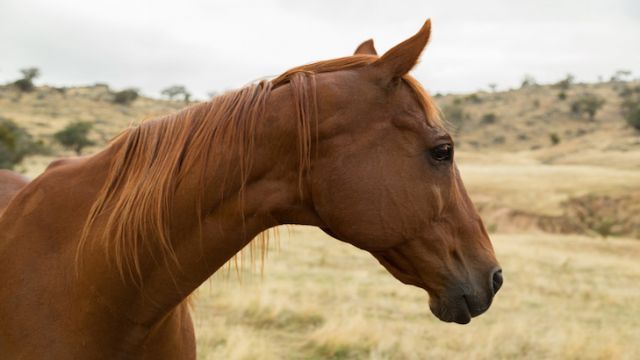
As Winston Churchill said, “There’s something about the outside of a horse that’s good for the inside of a man.” Two former Standardbred racehorses are now proving his point at the New Jersey Training School, part of the state’s Juvenile Justice Commission, with residents ranging from 12 to 23 years of age. It houses approximately 200 male juveniles.
Young offenders learn to care for the horses, and it’s a vocational trade they can put to use once they are released from the facility. The two horses belong to the nonprofit Standardbred Retirement Foundation (SRF), based in Monmouth County. The former racehorses — Psycho Chicken and Bondlyns Dollypop — were warmly welcomed by students and staff. Getting to work with the horses is a privilege for students at the school.
Standardbreds
Standardbreds are bred for harness racing, and pull a driver and sulky rather than have a jockey on their backs. These horses often have a longer racing career than thoroughbreds, but when they are no longer competitive, too many of them end up sold to slaughter. Horse slaughter for human consumption was banned in the United States in 2007, but that did not bring down the number of horses going to slaughter. Instead, these equines must endure a long trip to either Canadian or Mexican slaughterhouses.
Many Standardbreds become Amish buggy horses after their racing days are over, but that is usually just an interim period before going to slaughter. The Amish consider their horses vehicles, and when they can no longer perform the task, they aren’t kept around on the farm.
Psycho Chicken — a truly terrible racehorse name, not one made up by SRF — was herself rescued from a kill pen several years ago. Her former groom, Ken Lyons, now directs the program at the New Jersey Training School. She had won $116,000 in her career. Because Standardbreds are identifiable by freeze brand neck tattoos, former owners stepped up to the plate and rescued her before the mare got on the slaughter truck bound for Canada. She was donated to SRF.
Standardbred Retirement Foundation
Standardbred Retirement Foundation was founded in 1989 and in the past 27 years has taken in and found new homes for more than 2,000 horses. After adoption, horses can’t be sold or given away, but must return to SRF if the adopter can no longer keep the animal. Adopters must provide SRF with semi-annual veterinary reports — generally done in conjunction with spring and fall inoculations.
In its mission statement, SRF describes its purpose as “caring for, rehabilitating and securing lifetime adoptions of non-competitive racehorses, and ensuring their proper care with follow-up.”
Standardbreds are a versatile breed easily retrained for riding. Unlike thoroughbred ex-racehorses, who are best suited for experienced equestrians, most Standardbreds make good mounts for novice riders. The breed is generally quiet and easy-going.
Currently, SRF has over 200 horses in their care and available for adoption.
Self-confidence, self-respect, responsibility and bonding
Horses help young offenders in various ways. SRF co-founder Judith Bokman notes, “One must consider what these kids have been missing in their lives to understand how crucial it is to build their self-confidence and self-respect, and respect for others, all of which comes when caring for horses.” She says that when they are responsible for a horse, they bond with him, and for most it is their first bonding experience as many have been failed by their biological parents and have no one. “Their newly acquired responsibility brings the opportunity to learn numerous life skills, as well as vocational skills. Horses and kids is always a win-win, especially for kids in a situation such as this. The results bring many to touching tears.”
The young men at the facility are surrounded by a “state-of-the-art” perimeter fence and guarded by a round-the-clock, armed patrol. Most grew up on very mean streets, where toughness and brute strength were the only virtues. Working with horses helps teach empathy and caring, along with responsibility. They also learn quickly that even a strong man is no match for a 1,000 pound horse. Sheer muscle won’t cut it — they must learn that a firm but gentle hand is necessary when dealing with equines. With luck, this way of relating extends to dealing with other people, and allows them to build a better future for themselves.
—Jane Meggitt

